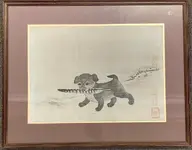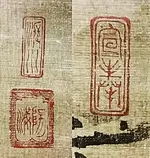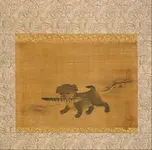Cariboo5
Hero Member
- Joined
- Oct 27, 2011
- Messages
- 851
- Reaction score
- 1,560
- Golden Thread
- 0
- Primary Interest:
- All Treasure Hunting
- #1
Thread Owner
Simply cute picture as this little guy looks so proud and happy packing that feather
with all the confidence in the world.
Got this from an estate sale and the consignor said it was an attic find that no one knew
it was there. Appears to have some age to it (sellers pictures) as I have not received it yet.
Described as painting on linen (maybe silk).
[FONT="]- Looking for help with the Japanese signatures, any information with the names or meaning, translation is appreciated...........
 ......
......
[/FONT]
with all the confidence in the world.
Got this from an estate sale and the consignor said it was an attic find that no one knew
it was there. Appears to have some age to it (sellers pictures) as I have not received it yet.
Described as painting on linen (maybe silk).
[FONT="]- Looking for help with the Japanese signatures, any information with the names or meaning, translation is appreciated...........
 ......
......
[/FONT]




